Another decade in the book, another opportunity to represent my life in lists and data.
Looking retrospectively, this past decade defined my interest in games. It’s been a hobby of mine since I was a young child — I remember holing up in my mom’s basement, replaying the same minigames over and over in Gus Goes to Cyberopolis. My dad bought me a Gameboy Color for my fifth birthday, and I dedicated at least a decade of my life (regrettably) to the Kingdom Hearts series. But in 2010, I started my first job, and so I finally had some disposable income to spend on my hobbies; I didn’t have to beg for games as birthday or Christmas or whenever presents. And so I played a lot more games in these past ten years. I started to follow industry news beyond new releases. I became more thoughtful about and critical of the industry. And I shifted my hobby into professional inquiry: in 2018, I co-wrote a book chapter about how video games could be used in educational settings, and in 2019, I piloted a camp that empowered kids to create their own video games.
The games industry has shifted a lot in this decade, too. We’ve seen a renaissance of games that put character and narrative at their center, which has long been what I wanted to see out of the medium. Game designers continue to heighten the artistic potential of games, both in photo-realism and artistic expression. Put shortly, video games this decade have been really, really good.
Now, to offer a caveat to this list: I obviously didn’t play every game that came out in this decade. I didn’t even play most games this decade. I missed major, beloved titles like Red Dead Redemption 2, the Uncharted series, or any of the Call of Duty games. Some of this comes down to personal taste, others to time (and monetary) restrictions. This list therefore will be limited to games that I actually played this decade, rather than some kind of pseudo-objective ranking of every game that released in this time frame — and I reserve the right to amend this list when I finally get around to playing Control.
Editorially, I have also decided to omit remasters or re-releases from my consideration unless they dramatically transformed the content of the original game. I have also listed the platform(s) on which I played the games listed, as that may have affected my experience with them.
#10: The Legend of Zelda: Breath of the Wild
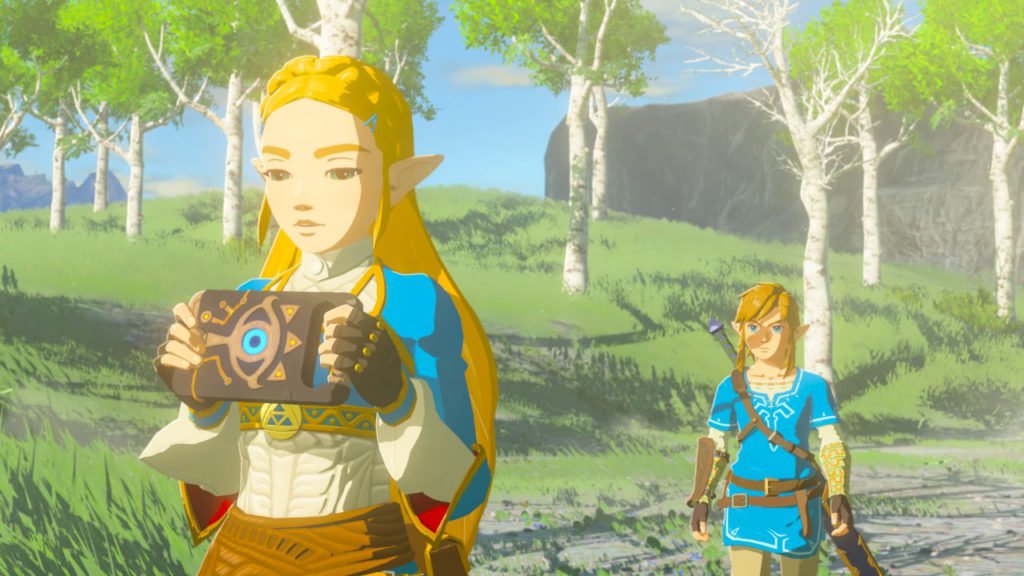
My feelings on Breath of the Wild are… complicated, to say the least. I’m sure many folks out there would recoil at it only just making my list; I’m sure it will appear at the top of most critical and personal lists, lists assembled by folks who are far better informed and well-equipped to talk about it than me. But here it is, at #10, even though it’s one of the games I pumped the most hours into within this decade (and threw the most curses at).
I have a rocky history with The Legend of Zelda. Most of the games in the series that I’ve enjoyed and spent considerable time with — Oracle of the Ages, Minish Cap, and Phantom Hourglass — are either widely disliked or, at least, considered the lesser games in the series. I’ve tried a few times to play through some of the classics in the series, like Majora’s Mask, but something never quite clicked for me in them. Other series staples, like Wind Waker and Twilight Princess, were inaccessible to me because I never owned the appropriate console on which to play them.
But Breath of the Wild was something different, both for the series and for me. To begin with, I had access to it: my boyfriend got a Switch not long after it released, and Breath of the Wild was the driving force behind that decision for him. I later would get a Switch of my own, and the ability to play Breath of the Wild as both a handheld experience and and a traditional console game seemed to help me stick with it.
Breath of the Wild was also an entirely new direction for the series. While past games have had open worlds and a focus on exploration and puzzles, Breath of the Wild did all that like no other. The simple act of traversing through the world works so, so well in Breath of the Wild, and the reason for that is that it never limits you in what you can do. You see a mountain, you can climb it — with the right gear, food, or stamina, of course — but you can climb it. The game never stands in your way when you are following your curiosity, and it rewards your wandering eye with breathtaking skylines, quirky characters, and new discoveries. Even after I had completed all the towers and unlocked fast travel points throughout the map, I would still choose to run great distances to an objective just to take in the splendor of the world, to enjoy the sparse yet powerful music, to meet other travelers along the road. This is why Breath of the Wild eked its way onto my list.
But as much as I loved my interactions with with world of Breath of the Wild, I hated just about everything surrounding it. The story, while competent, did not deviate too far from the Zelda formula: fight some mini-bosses (the corrupted Divine Beasts) to prepare you to fight the big bad (Ganondorf). While that’s a simple story structure that most games can be reduced to, Breath of the Wild does not add anything particularly innovating or exciting on top of it. And while Zelda is more of a compelling character in Breath of the Wild than she has been in some previous titles, she is still relegated to a damsel in distress role and is totally absent outside of the occasional flashback. I think the setup for her character is refreshing and interesting — a young woman attempting to discover her power and be worthy of the throne — but it’s still ancillary to the bulk of the game despite her name being in the title.
Breath of the Wild also offers no incentive to participate in its combat; by a certain point in the game, I had plenty of resources and powerful weapons, so the random Bokoblins and Moblins were more of an annoyance than anything else because I would not gain any experience points from defeating them — and when you factor in the weapon durability system, I felt actively discouraged from engaging in combat at all because I only served to lose from it. On top of that, I often felt I was fighting against the controls; the systems design of Breath of the Wild simply felt too ambitious for the limited JoyCon, and while a Pro controller assuaged most of my control issues, it’s difficult to swallow that the game almost requires a $70 add-on.
And then there are the shrines. My boyfriend, Joe, will insist that I hate puzzles and that’s why I did not enjoy the shrines in Breath of the Wild, and maybe that’s true. I don’t seem to derive the same fulfillment others do from sitting stuck at a puzzle for hours until you work it out; I’d much rather just look up the solution online and continue on my way. Many shrines I found had clear solutions, but they would be so tedious to actually perform that I simply handed the controller over to Joe and asked him to save me the frustration. While there are multiple possible solutions to many of these puzzles, I found the shrines overall to be so disconnected from the magic of the world above them — like entirely separate teams and design philosophies had inspired them compared to the parts of the game I actually liked.
It probably doesn’t help that — for inexplicable reasons — the game’s developers placed one of the most obtuse, irritating shrine puzzles so close to the Great Plateau, almost guaranteeing that most players would discover it in their early hours with the game. I did, and it did not leave a good first impression.
Even with all these frustrations, I know in my heart of hearts that Breath of the Wild is a phenomenal accomplishment — that it belongs on this list, that I secretly like it, because it does an open world unlike any game before it. Every so often, the game comes together in a beautiful harmony — I feel free, untethered, unrestricted, and in awe of the beautiful world before me, and then all my criticisms of the game slip away. And then I go down an elevator to a shrine and the din begins anew. I’m torn between that discordance, but it belongs here.
#9: Animal Crossing: New Leaf
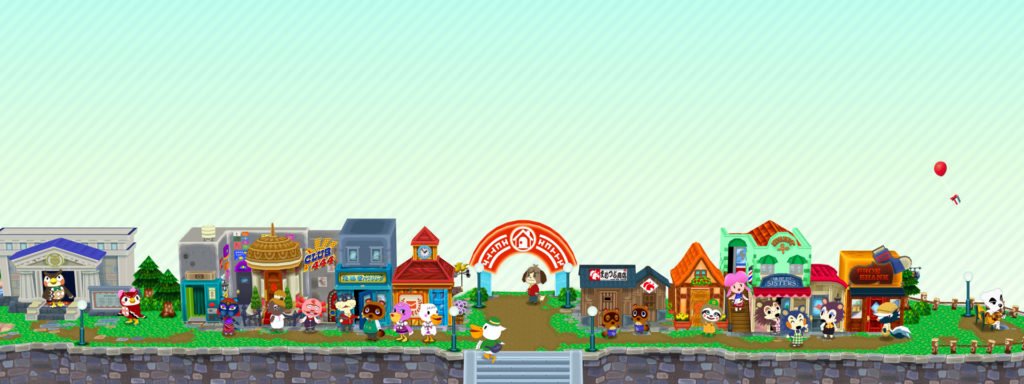
My love affair with the Animal Crossing series started back on the Nintendo DS with Animal Crossing: Wild World. I spent many a hours in middle school decorating my player’s room, designing custom patterns, and visiting my the towns of my siblings and friends. I broached the 3DS library late, but when I picked mine up in 2015, I knew that New Leaf would be a must buy.
Now, I could talk about some of the more meaningful and enjoyable additions that New Leaf brought to the series, like Dream Towns, Public Works projects, and more options for character customization. I could croon on about Isabelle, who I inexplicably and wholeheartedly love. And I could enumerate all the hours I dumped into the Desert Island Escape mini-game hidden within New Leaf, but I would rather not realize my shame and addiction on a semi-permanent platform like my blog. (I have since learned that Desert Island Escape is playable in Animal Crossing: amiibo Festival, making me one of four people who purchased Animal Crossing: amiibo Festival for something other than the bundled amiibo.)
Animal Crossing simply works in that it is one of the coziest experiences in gaming. While other titles focus on leveling up your character, meeting impossible combat challenges, or working out team strategies in cooperative settings, the joys of Animal Crossing are often found in solitude. Even if I have only twenty minutes to spare, I can load up my town and tackle whichever of New Leaf‘s numerous offerings best strike my fancy that day: I can catch fish, hunt for fossils, or design my house. I can build relationships with my townspeople or explore the towns other players have constructed. And even while some parts of the game can feel a bit tedious, like filling out the museum or raising enough bells to pay off a mortgage, the game never forces the player to complete any of it: all of these activities happen at the player’s pace, and the game encourages a sense of leisure. There’s certainly room to go hardcore in Animal Crossing, by time-traveling or hacking one’s game, but what I love most about Animal Crossing is how it respects my time and how it seems naturally designed for self-care. Animal Crossing is welcoming and playful in its art, music, and characters. It’s a game for taking a mental health day (or hour, or afternoon, or week), wrapping yourself in a warm blanket, and escaping to a world that is softer than our own.
#8: Final Fantasy XIV: A Realm Reborn

I have had a rocky few years with Square Enix. As a company, they have released some of the most important games and series to me — I count Final Fantasy X, Final Fantasy XII, and Final Fantasy Tactics Advanced among my all-time favorite games, and the Kingdom Hearts series was my entryway into gaming as a more serious hobby and gaming as a community. Square’s releases in the 2010-2019 span were not such easy allies; the company clearly struggled to meet both the new challenges of developing high definition games as well as match the innovations other developers had made. Quite simply, they no longer enjoyed their top dog status. They lost the trust and brand recognition that blockbusters like Final Fantasy VII and Final Fantasy X afforded them, and I was actively offended by Final Fantasy XIII series (!) and Final Fantasy XV.
I started in with Final Fantasy XIV on a whim. I had never played an MMORPG before, unless you count spending the better part of a day downloading The Old Republic and promptly uninstalling it after just a few minutes of gameplay. But I liked the Final Fantasy series, and it was free to sign up for the alpha. So I thought, why not?
I fell in love with Final Fantasy XIV quickly, even with the immense learning curve that any MMO would have. And I certainly had my ups and downs with the game; it is guilty of the infamously menial MMO quest design of fetch quests and killing squirrels to progress the story, of grinding out levels for hours just to access new content. Even so, I roped friends into playing with me, and part of my enjoyment of Final Fantasy XIV became the relationships and socialization that happened around it: I was able to maintain and reconnect friendships through XIV. Unfortunately, I haven’t been able to keep up with Square’s active roadmap for the game or set aside enough time in my increasingly busy life to justify the subscription cost. I’ve yet to even finish the Heavensward expansion. But every time I come back to the game, I’m delighted by what I enjoyed the last time I played, and the new content only seems to get better and better.
Final Fantasy XIV represents hope, then, that a game company can take a critical eye to their releases, do right by their customers, and deliver something fantastic. The game’s original launch was a different sort of debacle than their other contemporary releases, and certainly larger in scale in that the game was pulled off shelves and rebuilt from the ground up. But the team behind A Realm Reborn were able to raise the game from the ashes, and many critics agree that XIV‘s most recent expansion, Shadowbringers, is its most ambitious and powerful yet. And while I’m in one of my valleys with the game right now, distracted by the responsibilities of grad school, the opening notes of some Gridania’s field music are enough to wrap me in comfort and inspire me to return yet again to Eorzea.
#7: Marvel’s Spider-Man

I’m not a big superhero fan, but I’ve always had a soft spot in my heart for Spider-Man. The Sam Raimi films came out when I was young, and they were exactly the type of popcorn blockbuster that I wanted at that age. I also played a whole bunch of the Spider-Man 2 video game on my original Xbox; it was one of the first open world games that I played, and I would spend hours swinging around New York City or, my favorite, climbing to the top of the Empire State Building and seeing how close to the ground I could get before I had to swing off to safety.
So when Insomniac announced their new Spider-Man game for the PlayStation 4, I was excited to relive the joys of one of my favorite childhood games, in a more modern and varied open world. I made it a few weeks after Spider-Man‘s release before I cashed in some coupons and dove in. I played every night for a week, and it was the first (and only) game I ever platinumed on PlayStation.
Spider-Man is simply a joy to play. The web swinging and traversal is fluid, allowing the player to zip around the city with ease and style. As entertaining as the fast travel cutscenes were, I rarely used the system simply because I loved travelling through the city so much. The game also has one of the best golden hours around; much of the action of the game takes place against golden sun rays and soft shadows. It’s a beautiful, beautiful game, and I appreciate any game with a cosmetic system as deep as Spider-Man‘s. I loved earning all the suits and cycling through them, especially the comic book suit.
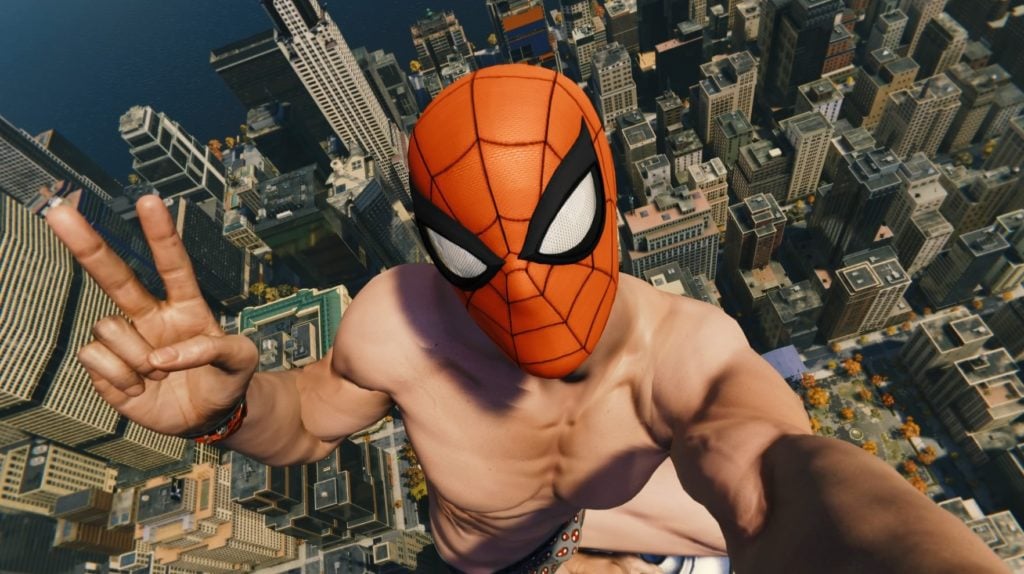
The story in Spider-Man is better than it has any right to be for a superhero game. The twists and reveals are mostly predictable, but where the game shines is the relationships built between the characters. Peter and MJ have real chemistry, and the complications in their relationship are believable because MJ has an actual will in this version of the Spidey universe. She doesn’t want to stay away from the action and actively resists any damseling (and Peter’s attempts to protect her). Peter and Otto have a believeable mentorship, which makes his shift to Doc Ock more tragic. Spider-Man cares about establishing and developing its characters, and it helps ground the superhero action in a human, emotional context.
By far my favorite portions of the game were the sections where Peter was allowed to be a friendly neighborhood Spider-Man: retrieving his homeless friend’s escaped pigeons, chasing down a garbage truck that took his trashed belongings after he was evicted, and collecting the backpacks he had scattered through the city offer a nice reprieve from the big action of the main story. Again, it helps to humanize the character and ground the story; there was a levity to Spider-Man that made it a joy to play.
Spider-Man was a triumph in how to make a good superhero game — one that isn’t bogged down by a cinematic universe, one that doesn’t repeat the stories we’ve seen a dozen times on screen and in comics. Insomniac put their own fresh, original spin on the characters and the universe, making it accessible for folks like me who don’t know the character well while still being a satisfying homage to the character for superfans.
#6: Horizon Zero Dawn

When Horizon Zero Dawn was first shown at E3 2015, I was instantly interested: a new IP starring a badass, bow-wielding female character voiced by Ashly Burch? Sign me up. The setting looked unique, following our society’s fascination with post-apocalyptic societies but avoiding any cliches. Horizon Zero Dawn‘s world is harsh for some, but there are thriving settlements and communities, diverse tribes with real identities, and, well, robot dinosaurs.
The way that Horizon Zero Dawn contrasts its grounded tribal life with the high-tech machines makes for a visually splendid experience, often set against the backdrop of sweeping mountain ranges and decaying ruins. I found myself regularly pausing on mountaintops just to take in the beautiful, varied scenery of Aloy’s world, just as I did with Breath of the Wild. There’s a real sense that Aloy lives among the ruins of a world that once was, and the player discovers the story of that world’s downfall through some pretty incredible environmental storytelling.
Horizon Zero Dawn also focuses on stories that we do not usually see outside of novels geared specifically toward young women. We have had a prolific history of games about fatherhood — Final Fantasy X, Heavy Rain, God of War, The Last of Us, BioShock Infinite, to name a few — and many of them craft compelling, meaningful narratives. And fatherhood is important in Horizon, certainly: Rost, Aloy’s father figure, is killed in the opening hours of the game, but his influence on Aloy looms large throughout Aloy’s internal narrative and the ways he taught her to survive in their harsh world. That is all well and good, but Horizon fills the comparative void that the industry has created for games about motherhood. Horizon therefore distinguishes itself in that it focuses not only on a woman’s story, but the story of a young woman discovering her connection to her mother through the game’s narrative and, on a broader scale, Mother Earth. It’s not a coincidence that the person responsible for destroying the world before the events of the game is a man and that the person who works to heal it is a woman — a woman who goes on to create a female-coded entity to care for the inhabitants that will follow long after her death. And without spoiling the ending or events of the game (you can click on this link if you want to do that for yourself), Horizon has a powerful final message: for women to nurture their daughters to be curious, brave, and compassionate women who can nurture the world under that ethos.
In terms of gameplay, Horizon Zero Dawn offers a varied experience; Aloy has many different bows, slings, traps, and other tools at her disposal, which the player can select according to their playstyle and the demands of the combat encounter ahead of them. I found myself favoring the Sharpshot Bow for stealthy, high-precision shots and its tear ammo, which will shoot pieces of armor off of enemies. Enemy encounters were always varied, as the terrain would often shape one’s approach, and enemies of different types were present together, adding a heightened challenge.
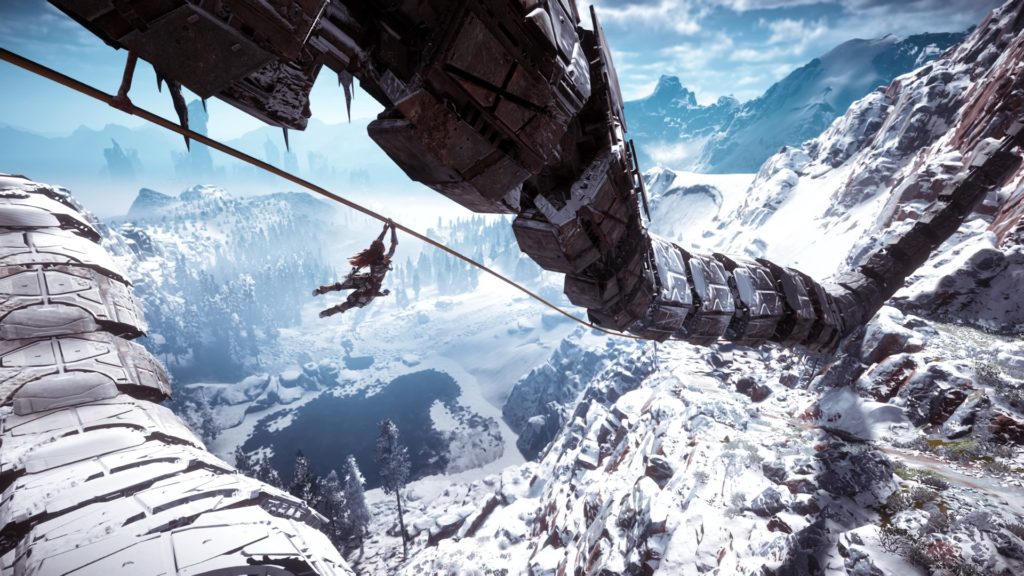
Horizon Zero Dawn‘s shortcomings are especially stark when you consider that it released just days before Breath of the Wild, and I think that led many to overlook it. Breath of the Wild very much follows the “if you can see it, you can climb it” philosophy, so long as the player has adequate stamina and it’s not raining. Horizon Zero Dawn instead uses an Uncharted-style traversal system. It’s functional, but it lacks the fluidity and freedom of Breath of the Wild, which is jarring when the games are played soon after one another. Horizon Zero Dawn also has a robust crafting and inventory system — in some ways, I prefer it to Breath of the Wild, as I can quickly craft some new arrows in Horizon Zero Dawn as I need them, which gives me the freedom to use the weapons and tools I prefer in combat. But the gathering and inventory management in Horizon can feel clunky at times, as the player is always having to figure out which resources to keep and which to sell off.
All around, though, I have really enjoyed my time with Horizon Zero Dawn. Its world is vast and visually delightful, its story is gripping, and even the side quests have a level of care and detail put into them that other open world games struggle to embed. More than anything, it tells a story that actively values and empowers women and mothers, which few if any games do or do as well. I’m excited to see Guerilla fine-tune some of the clunkier aspects of the game and evolve Aloy and her world.
#5: Firewatch
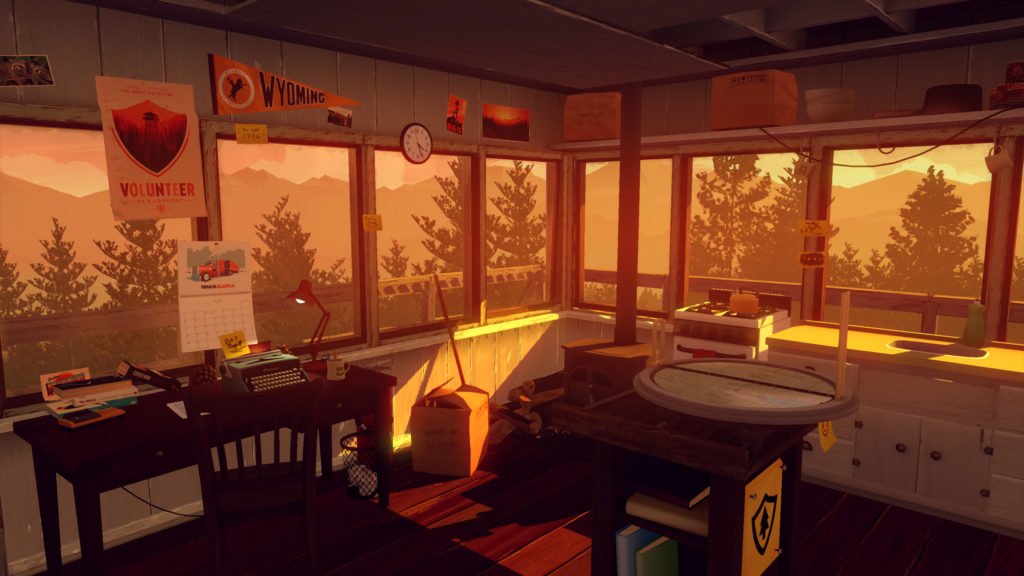
From Firewatch‘s art, it’s easy to get the wrong impression of the game. Its now iconic design features flat mountains against the glowing backdrop of the setting sun, rich trees to lose oneself in, and a lone firetower set on spindly legs for your quiet contemplation. It seems, then, to follow the Emersonian ideal of transcendentalism — of communing with nature to discover truth and beauty and the meaning of all things. It seems to be about living deliberately, separated from the constant phone calls and text messages and push notifications. But Firewatch‘s realities are far from these Walden-esque projections.
Henry goes to the woods not to discover himself but to lose himself. Firewatch is a game about escapism — about running from what’s tough in life, using solitude as a hideout, constructing fantasies to keep you from hardship, and the people we wrap into our paranoia as we jump at the shadows, afraid to confront what actually looms within us. It’s a game about learning that reality eventually catches up with you. We can only live in the fictions we’ve built to protect ourselves for so long, and the more we try to cling to them, the further we’ll be driven to madness.
Part of what makes Firewatch such an accomplishment is the way it is able to build human relationships through a walkie-talkie. The voice performance of the actors behind Henry and Delilah is terrific and helps create an intimacy between two people who have never met in person. And that, too, becomes part of Firewatch‘s power — it forces the player to question how well we know other people when we only see the sides of themselves they have constructed. We are rapt as we watch their romance evolve, and we root for it even though we know it is doomed.
Firewatch‘s anti-climax is perhaps one of the most divisive in gaming history, and it brings those themes to a head. When you talk to anyone about the game, your conversation will probably — and circuitously — start with what you thought about the ending. Henry and Delilah’s relationship was always going to end this way, because it had to, but that doesn’t stop the player from desiring that catharsis — they’re simply looking for it in the wrong place. That density and room for debate is the mark of a great piece of story — we’re able to still talk about it and dissect it years after its release. Firewatch stakes out a place in your head and stays in there. It’s a work of art.
#4: Mass Effect 2
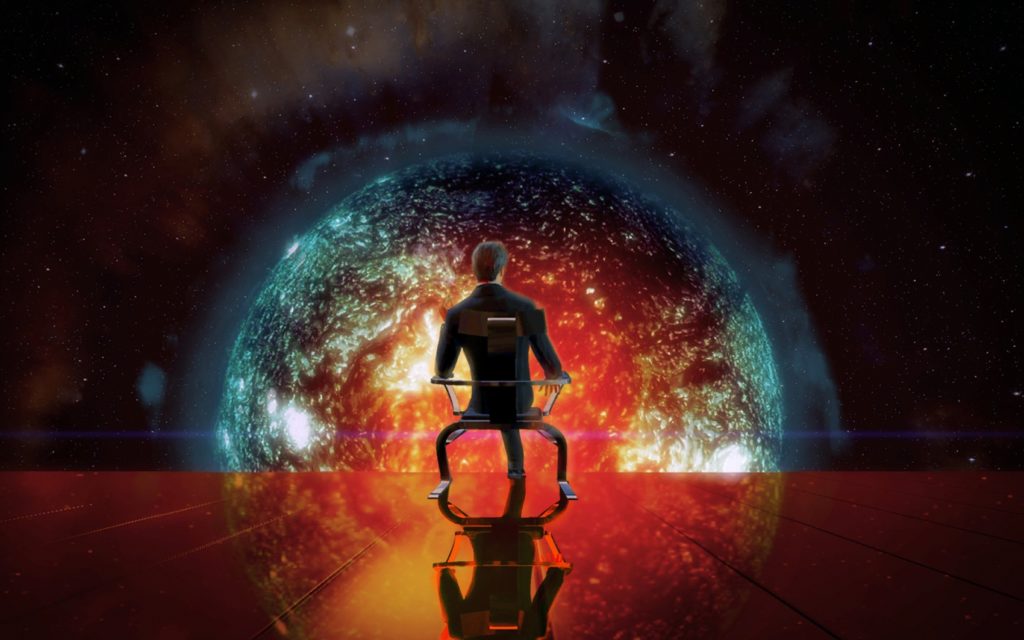
I have been quoted as saying that Mass Effect 2 is the “game of the century.”
Such an assertion is impossible to make given that we’re only nineteen years into this century; it’s obviously a hyperbole. But with Mass Effect 2 releasing in January of 2010, I hold that it established an ethos that would guide the games that came after it — and that ethos is character.
The first Mass Effect game was a trailblazer in its own way, of course. The level of choice, consequence, and cinematic storytelling included within it was unprecedented at the time, and it received appropriate accolades. But while the story is an enjoyable space opera, it’s pretty by the books — you play as a noted military hero who assembles a team of soldiers and experts to fight an operative gone rogue. Mass Effect has its unique voice, and the story takes some exciting turns, but you’re still a hero who does heroic things (or, if you play Renegade, you’re a hero who does mostly heroic things with a sarcastic smirk and a willingness to line your own pockets in the process).
Mass Effect 2 asserts that it is going to do something different within the first five minutes of starting the game — when the player character, Commander Shepard, is abruptly killed, then reincarnated two years later by rogue paramilitary group for what they make clear will be a Suicide Mission.
From there, Mass Effect 2 does not launch any big twists or surprises onto the player. You always know that things are headed for the Suicide Mission, and you have to prepare as best you can for it. While you had the backing of the intergalactic government, vast military resources, and a highly qualified crew in Mass Effect, Mass Effect 2 sees you assemble a ragtag crew in a patchwork body; your crew consists of hackers, mad scientists, thieves, genetic experiments, and generally disturbed personalities. Even those characters who return from the first game are grizzled by time, with shifting moralities. Most of your assembled crew could give a damn about the fate of the galaxy or Cerberus’s interests, but Mass Effect 2 lives and dies by these characters. As you sort through each of your squad member’s personal traumas and help them find the peace they need before they join you on your Suicide Mission, the game posits that the way to overcome impossible odds and save the universe is by loving and caring for the people around you — of building bonds that mean they will follow you to death’s door (and, hopefully, back).
#3: Life is Strange
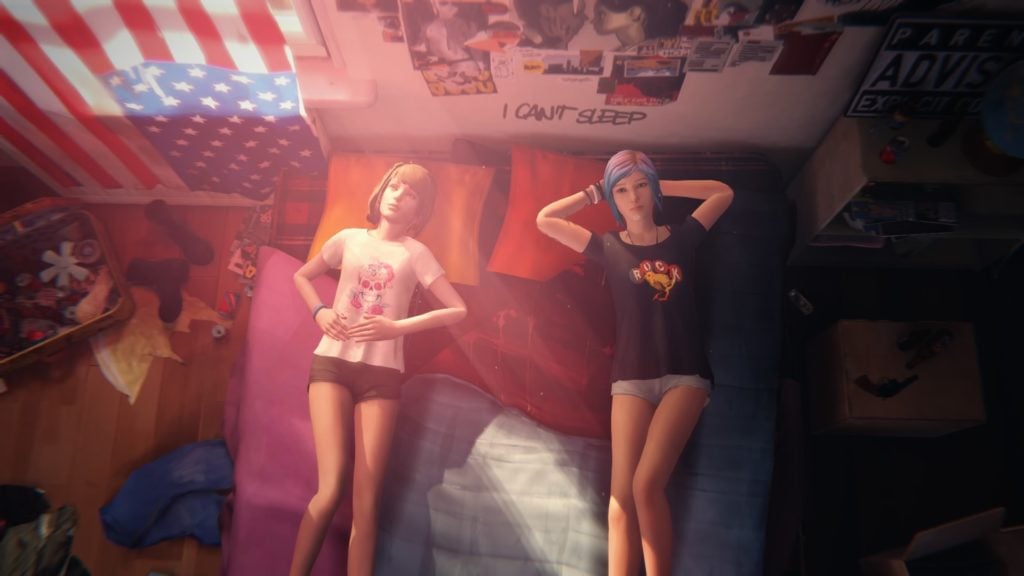
When Dontnod released the first episode of Life is Strange, I shared effusive praise about it. It was one of the few games that I felt represented me — that spoke to my experiences as a teenage girl, that did them justice, that felt authentic. I still feel that way. Life is Strange continued its exploration of difficult topics in its later episodes — suicide, drug use, sexual abuse, cyberbullying — but it was never exploitative, nor did it ever feel like an afterschool special. It conveyed these harsh realities with grace and mindfulness — realities that most games are either too afraid to include or woefully mishandle. And in that way, it did justice to the stories of many.
After I finished the fifth and final episode of Life is Strange, Polarized, I was left with a bad taste in my mouth: I didn’t feel that Dontnod delivered on its ambitious storytelling or tied up loose strings in its ending. I still haven’t quite made my peace with the game’s final choice, though learning about the time and resource crunch behind it softened it a little. But when I think about the game as a whole, I think about the good. I think about the incredibly deep and real and complicated and human characters that inhabit Arcadia Bay. I think about the way Dontnod masterfully uses licensed music to establish those characters and add an emotional weight to scenes. I think about the tension and twists in the narrative. And I think about how few games have been able to tell a story of this magnitude — a story that, by its nature, wraps the player in and doesn’t let go even after the credits roll.
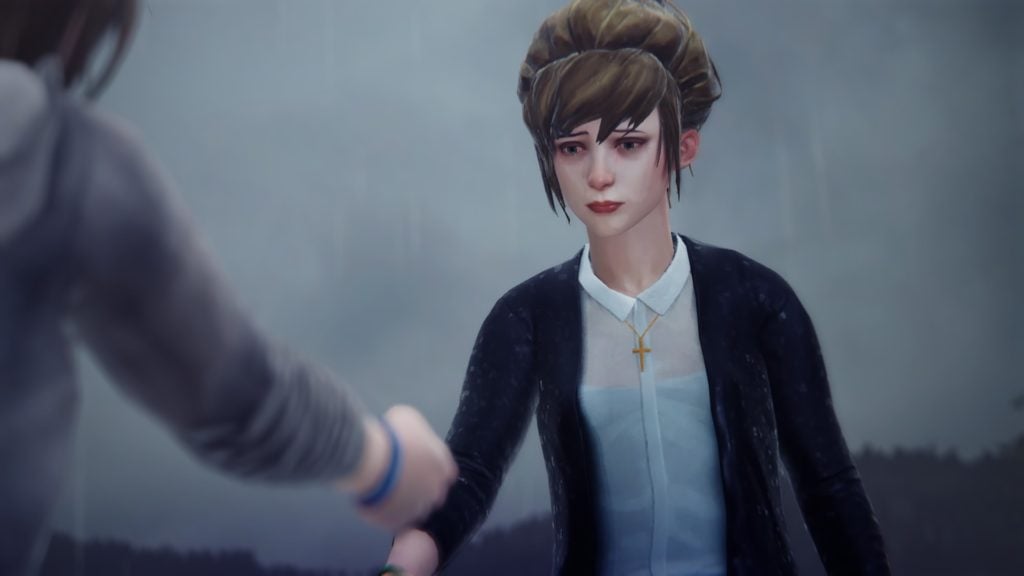
And I think about how Life is Strange is unlike any other game. Sure, there are comparisons one can make across genre or mechanics, but what other game places a group so often excluded from and terrorized within gaming — teenage girls — at its center? What other game speaks to the ways that men victimize young women? What other game gives voice and power and agency to these young women, refusing to sideline or damsel them?
As much as it is easy to goof on Life is Strange for its, at times, cringe-inducing lines or its rampant Twin Peaks references, it has a clear mission to represent the social and emotional realities of young people. And it manages to mix its ambitions for social commentary with a deeply affecting, resonant story; it never becomes too didactic or wrapped up in making a message — it’s always grounded in the characters and the story. I think about Max and Chloe and Kate and Rachel and Nathan and Victoria on a regular basis, and I was in anguish as I watched tragedy unfold around them. It’s a rollercoaster I loved riding.
#2: The Last of Us
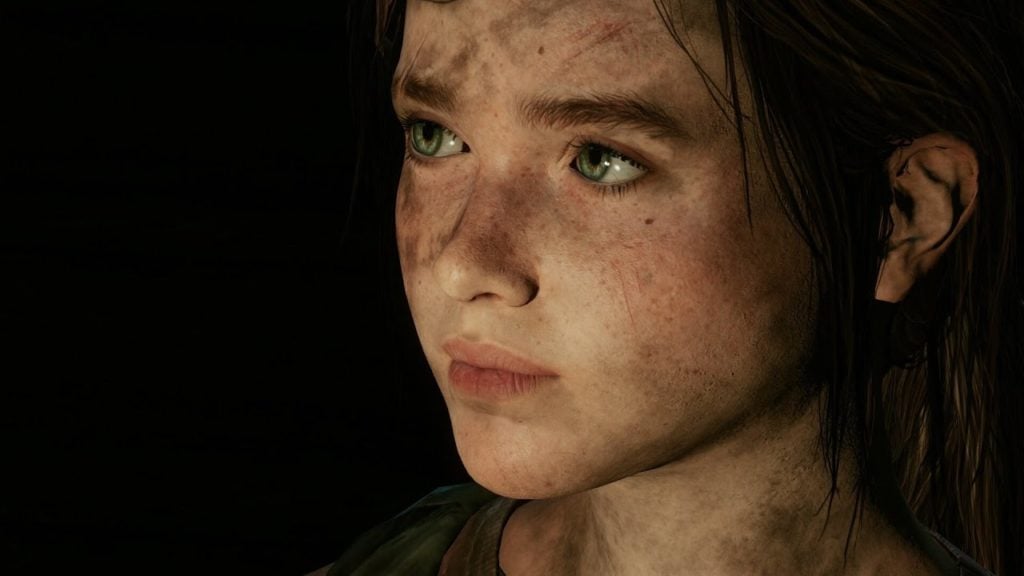
When I started exploring video games as literature, the first game I thought of was The Last of Us. There are some phenomenal, emotional, impactful stories to be found within games — and I’ve included many of them on my list, lauded them for just that. But The Last of Us is in a class all its own.
Nothing about The Last of Us would make one expect anything revolutionary. It’s a zombie game. It’s a big escort mission. The story, on paper, doesn’t seem like anything extraordinary or new for the genre. You’re Joel, a survivor twenty years into the zombie apocalypse who has lost his daughter and been tasked with escorting a 14-year-old girl across the country so that she can be studied for her immunity to the zombie virus.

Where The Last of Us distinguishes itself is in the extraordinary execution of that story. Joel and Ellie are made to be real by the complex motivations and ambitions and stories behind them. In the opening moments of the game, when the zombie virus first emerges, Joel loses his daughter Sarah The Last of Us is about finding small glimpses of humanity in a bleak, punishing world. There is no easy mortality to The Last of Us, no clear villain or hero — there’s a darkness behind every character, a guilt that they have for continuing to exist in a world filled with senseless loss. As much as I hate Joel for his actions throughout the journey, I understand them. I understand that he clings to his concept of surviving at any cost because it’s all he has left. I understand the ways that he has been broken and twisted by loss, the way that Ellie represents his final remaining connection to his humanity. In the final moments of the game, when Ellie at last sees Joel for what he is, we understand that the world could do the same to her.
The Last of Us is a game about love because somehow, after all the traumatic blows that Joel, Ellie, and the player share, we still want to believe that love and humanity can endure. We want to prevail and do justice to the memory of the people we have lost along the way. We want to believe that our connections to the people we love can stop us from being swallowed by the harshness of the world. We want to look for the light — and the shreds of it that are found in The Last of Us are made profound by their rarity.
#1: Stardew Valley
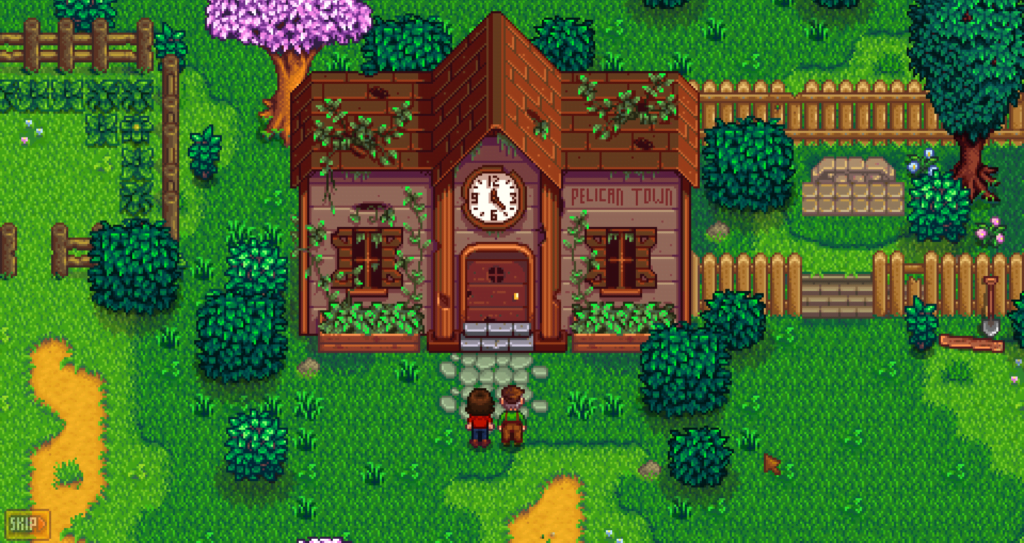
Depression has been my quiet struggle for many years. When I picked up Stardew Valley, I had just started on a new medication that left me an emotional mess: up and down, crying all morning, needy for Joe to come around and pick me up. I wasn’t in school, and my next steps in life were totally uncertain. It was a dark time for me, and Stardew was my light. The game was a good distraction; I could sink hours and hours into it at at time and never feel bored. And it made me feel like I was accomplishing something, working on making things better, even if that “better” was happening in the context of the game — like upgrading my sprinklers so I wouldn’t have to do as much watering or getting the town bus line reopened so that Pam would have her job back. Stardew gave me comfort; it became my game for self-care. And even when things aren’t so dire as my first months with the game, Stardew Valley is still like an old friend I can come back to whenever I need some solace or just to kill a little time.
It’s difficult to pitch Stardew Valley to people. There’s an immensely personal bond I have to it, but on the surface, it doesn’t sound too interesting: it’s a farming simulator like Harvest Moon, kind of, with shades of Terraria and Animal Crossing. But it’s more than that, too. And I think part of it has to be played and experienced to be understood.

To speak more broadly, though, I think the message Stardew Valley carries is something we all need to help get us through the state of the world in 2019. Stardew Valley is about community — about forming relationships with the people around us, about rekindling our connection to the earth and to family and to ourselves. Stardew Valley posits this message early on, through Grandpa’s Letter, which suggests that the “dire change” the player needs can be accomplished by rediscovering what really matters in life: “real connections with other people and nature.” That ethos becomes the reason for the gameplay loop: rebuilding the town’s community center and pushing out the capitalistic forces that seek to place us in endless, soul-crushing competition with one another. Stardew Valley carries an overwhelming hope that happiness is within reach if we work for it — that we can regain and rebuild our connections to the world through good, honest work, through communion with the land, through taking care of each other, through forming a sense of community in our increasingly separate, disconnected time. Sometimes I need reminders of that hope, and Stardew Valley makes it all seem achievable — even if we know it won’t be as easy as picking some leeks in the forest or growing some gold star quality parsnips. It’s within reach, if we’re willing to work for it.
Honorable Mentions
Middle-earth: Shadow of Mordor
I played a lot of Shadow of Mordor these past few years, and yet I somehow haven’t managed to finish it. Mordor does not do much in terms of compelling narrative or world-building — which is shocking considering it takes place in the Tolkien legendarium — but what it does do phenomenally well is the Nemesis system. I hope to see more games implement similar systems within them — though the game has been out for five years now, and nobody has really delivered there yet. It made for some fun antics in what would otherwise be a pretty humdrum game.
The Order: 1886
Those who know me will know I was incredibly hyped for The Order, and it was one of my biggest gaming disappointments. I liked what was there, but it needed more to it. I still think that the setting and characters are incredibly compelling, and I hope — against odds — that Ready at Dawn will have another chance to give the IP the second shot it deserves.
Tomb Raider
I had never played a Tomb Raider game prior to playing Tomb Raider, the 2013 reboot by Crystal Dynamics. I had also never played an Uncharted game, which I am told is very similar to playing Tomb Raider. This game was surprisingly gay and surprisingly good; what I expected to be a fun action romp actually had an enjoyable story and gave some solid development to Lara Croft. It was a commendable way to breathe life into an old, aged franchise.
The Sims 4
I am a Sims 4 convert. I clung to The Sims 3 for a long time, lamenting the loss of the Create-A-Style system (and toddlers, and pools, and other things). Sims 4 recovered from a rocky launch and has turned into a streamlined version of The Sims that I didn’t know I wanted. I can’t imagine going back to TS3 now — even if I did like the live neighborhoods. I’ve sunk a heck of a lot of time into The Sims 4, and I think the team behind it deserves recognition for bringing more equitable and diverse gender options to a game series that has previously been quite binary.
Never Alone (Kisima Ingitchuna)
I want there to be more games like Never Alone. Never Alone was created in partnership with Alaskan native peoples to represent their stories, their heritage, and who they are now. While the gameplay and story are relatively simple, they gave me exposure to a culture that I would probably otherwise know or see very little about. I enjoyed unlocking all the little documentary-style clips, which I found incredibly well-done, and the educational potential of Never Alone excites me as both a gamer and a teacher.
Pokemon Sun & Moon
This Pokemon game let me dress up my character, which is really all I ever needed out of a Pokemon game. But it also streamlined a lot of things about the series, making it accessible again for me, someone who has flagged on it. Not having to deal with HMs alone was a huge difference from previous titles, and I don’t care what anyone says — experience share saves me time and makes it so I can actually finish these games.
I commissioned the phenomenal header image for this post from Nax Yoder. Follow the link through to see more of their work.

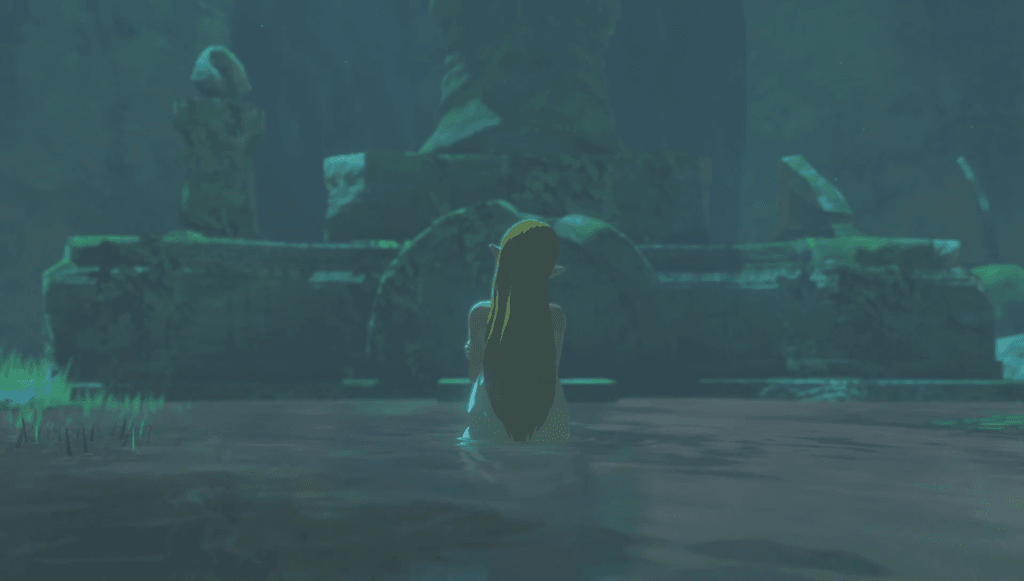
Leave a Reply